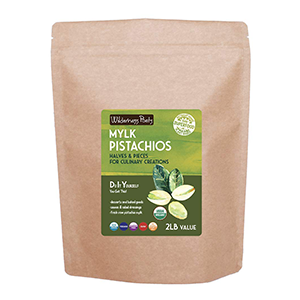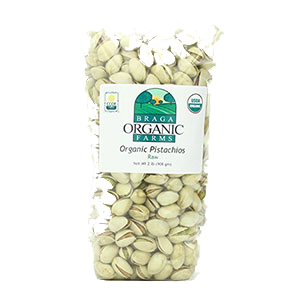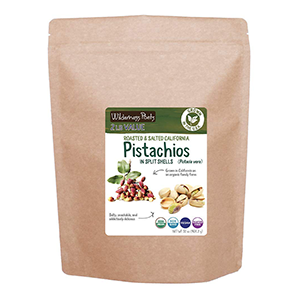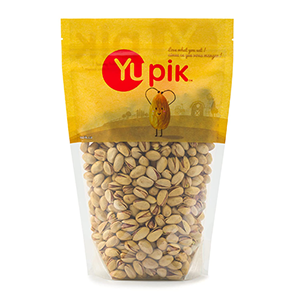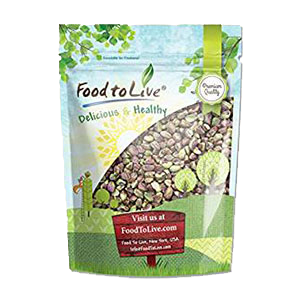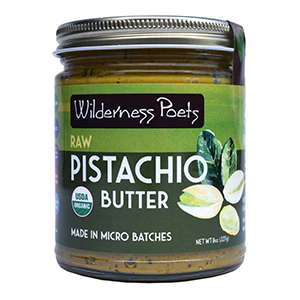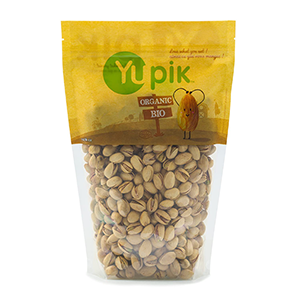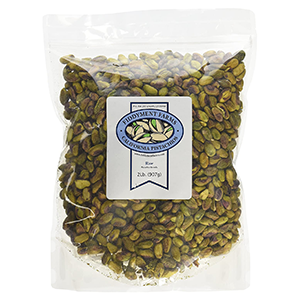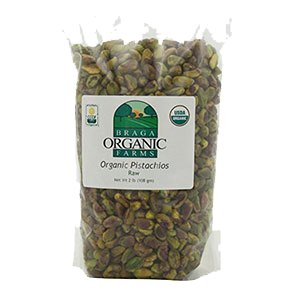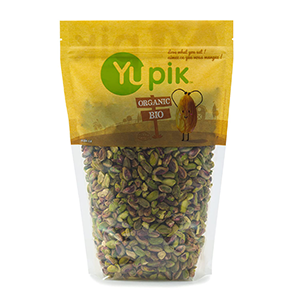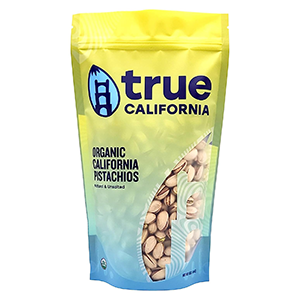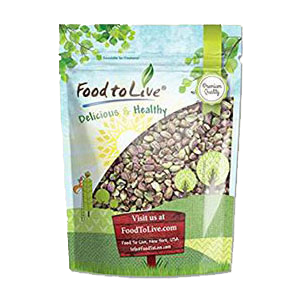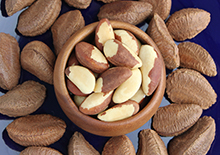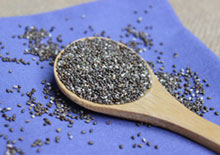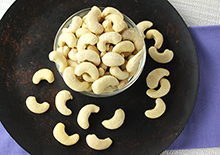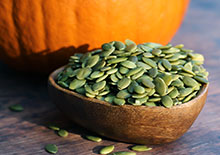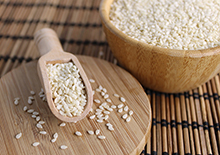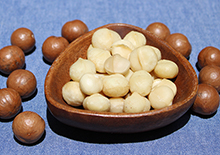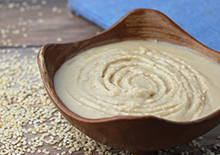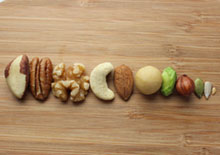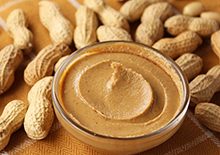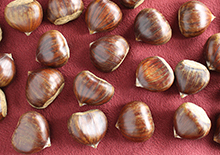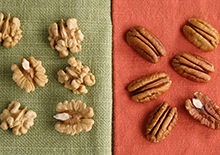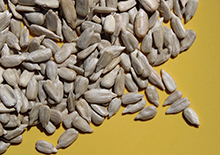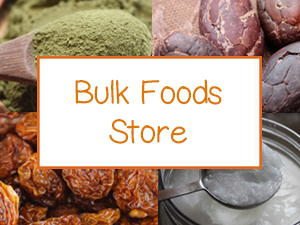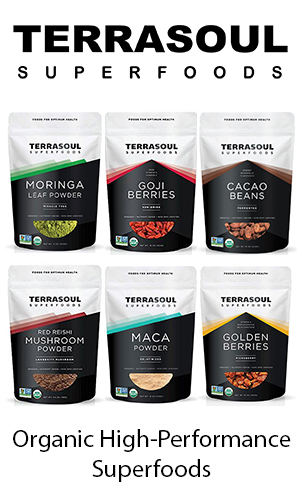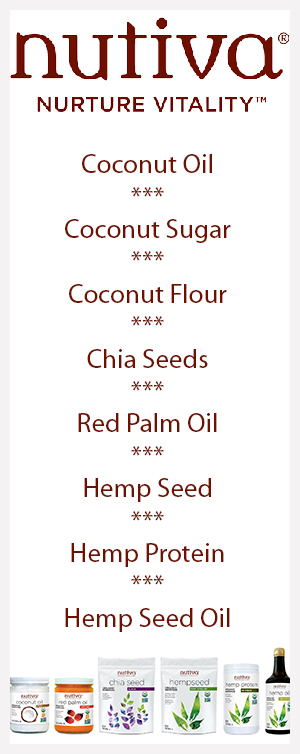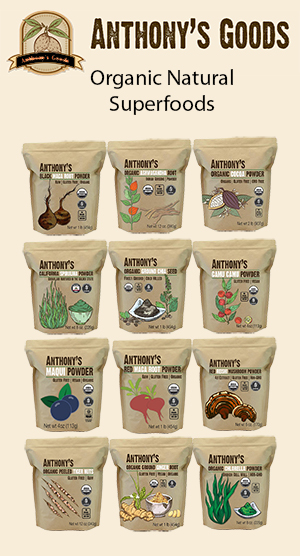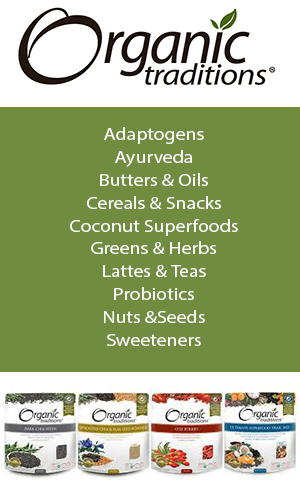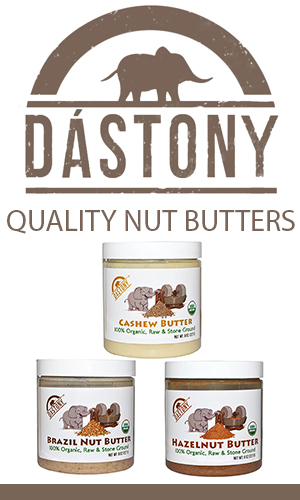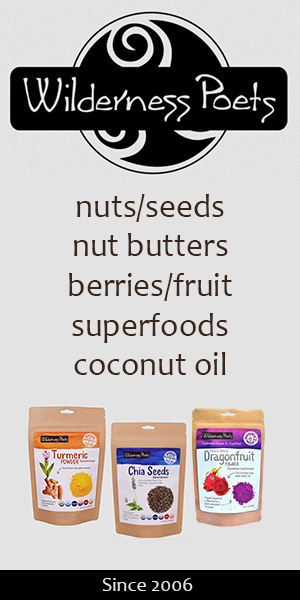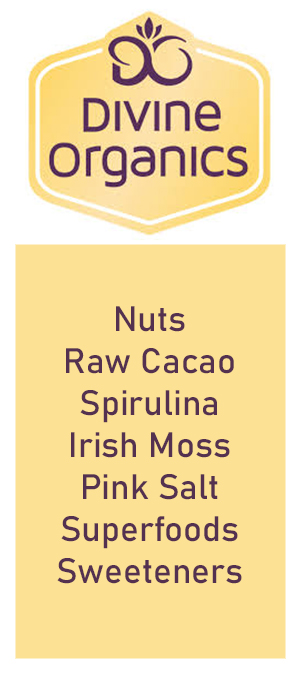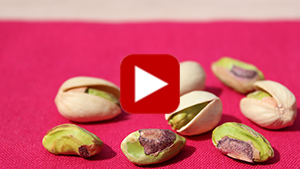- Home
- Nuts and Seeds
- Benefits of Pistachios
Top Fun Facts and Big Benefits of Pistachios
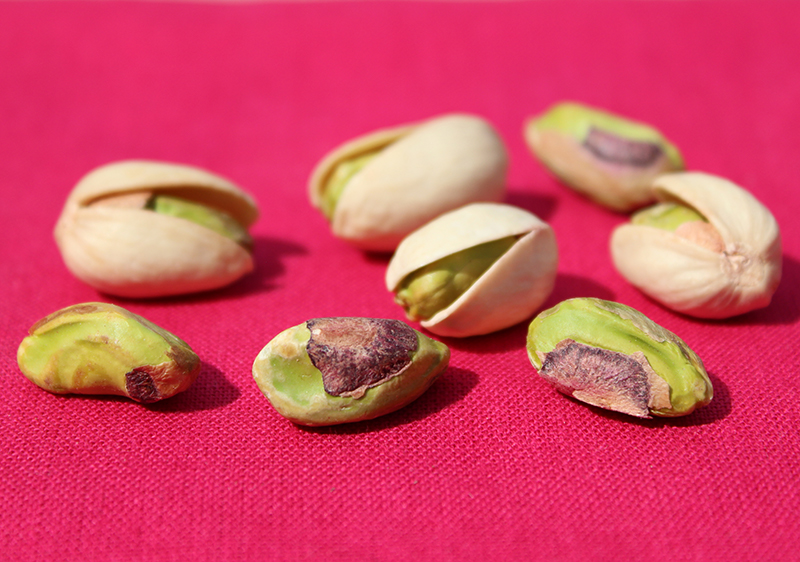
Pistachios, commonly consumed raw or dry roasted, are probably one of the most popular tree nuts to snack on for their buttery-sweet texture and taste.
Believed to be native to the Middle East region near Persia or present-day Iran, they're regarded as a type of culinary nut though botanically they are actually seed kernels.
They come from the Pistacia vera tree species of which there are many different cultivars.
The U.S. and Iran are currently the leading commercial producers. Our
home state of California produces a great majority, most of which come
from the Kerman cultivar. In Iran, some top varieties grown include cultivars like the Fandoghi, Kalleh Ghouchi and Akbari.
Here, we'll take a brief look at other facts and benefits of pistachios, one of the world's most favorite nuts!
4 Fun Facts About Pistachios
1) Why are Pistachios Green?
Pistachios get their yellow lime-green color from two plant pigments, chlorophyll and carotenoids. The reddish-purple skin layer on the kernel comes from the anthocyanin compound.
High-quality kernels are a vibrant color which usually indicates a deeper flavor. In-shell pistachios are typically fresher tasting and retain more of this natural pigmentation.
2) Called Smiling Nuts
In parts of the Middle East, pistachios are frequently referred to as the "smiling nut" or "happy nut" in China. This is because the split shells resemble an open-mouthed smile.
3) A Long-Living Tree
The pistachio tree, like other nut trees such as walnut and pine nut, can be a long-living species estimated to potentially live for up to 300 years in age.
As a highly resilient desert-thriving tree it is well-suited to hot arid climates and is thus widely cultivated in the Mediterranean region.
4) About Unopened Pistachios
If you've ever purchased pistachios in their shells, you may have come across shells that are closed or not completely open. This is a sign that the nut has not ripened to the point of cracking.
Pistachio nuts on the tree grow in fleshy husks that turn from a green to a yellow-pink color when ripening. When fully mature the shell inside the husk will partly split or pop open. This is an audible sound known as "dehiscence." The consistency in which they split can vary however as far as timing goes.
In commercial processing, the closed-shelled nuts are often separated but sometimes a few remain. If you can crack open the shell, the kernels usually have a ripe flavor but can sometimes have a slightly astringent taste.
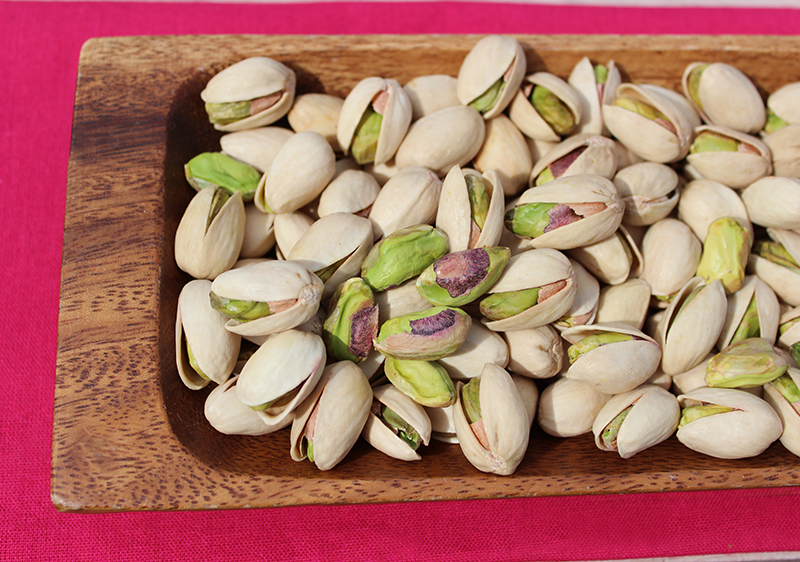
4 Big Benefits of Pistachios
1) Nutritional Composition
2) Antioxidant Carotenoid Content
3) Pistachio Vitamin and Mineral Nutrients
4) Benefits of Pistachios, Melatonin Content
1) Nutritional Composition
Raw or roasted pistachio kernels are composed of about 45% fat with a ratio of about 20% protein. Carbohydrates make up approximately 28% with most of that coming from dietary fiber content, not starch or sugar.
Pistachios are often claimed to be a good heart-healthy option to include in the diet because they support balanced cholesterol levels. This is due to their higher monounsaturated fat (MUFA) profile, half of which is in the form of oleic acid. One ounce of pistachios contains about 13g of total fat and 156 calories.
Despite their high-fat ratio, they aren't considered by science to be a food that will contribute to weight gain. Rather, they are often promoted and researched as a healthier snack alternative for those on weight-loss programs.
Consumed in moderation, not more than one ounce or about 45-50 pistachio kernels, they can be a nutrient-dense way to satisfy the appetite with a good amount of protein, likewise providing a substitute for high-carb snacks.
2) Antioxidant Carotenoid Content
Pistachio nuts are a source of beta-carotene, but the main two carotenoids that dominate are LUTEIN and ZEAXANTHIN. Out of all nuts and seeds, they are the highest in pistachios. (*)
These two nutrients are reported to be supportive to healthy vision and eye structure. Because carotenoids are best assimilated with dietary fat, pistachios provide the perfect package. (Source)
3) Pistachio Vitamin and Mineral Nutrients
Some of the benefits of pistachios come from their vitamin and mineral composition. While this may depend on the cultivar, generally they are good sources of the minerals copper, manganese, phosphorus, potassium and magnesium.
In contrast to other nut and seed varieties, pistachios remain the highest in POTASSIUM content at about 287 mg per one-ounce serving. (Source)
Likewise, they are top on the list for their VITAMIN B6 nutrient, important for the production of the neurotransmitter serotonin.
In regard to other vitamins, they are relatively high in THIAMIN at about 16% the Daily Value (based on a 2,000-calorie adult diet). They also are sources of vitamin E, folate, riboflavin and niacin.
One of the benefits of pistachios is that they are known to be lower in oxalates compared to other types which can help nutrient absorption.
PISTACHIOS
Raw (Shelled/Unsalted) - One Ounce
Protein - 5.8g, 12%
Fat - 12.4g, 19%
Carbohydrates - 7.8g, 3%
Fiber - 2.9g, 12%
Calories - 156 (653 kJ), 8%
Copper - 0.4mg, 18%
Manganese - 0.3mg, 17%
Phosphorus - 137mg, 14%
Potassium - 287mg, 8%
Magnesium - 33.9mg, 8%
Iron - 1.2mg, 6%
Zinc - 0.6mg, 4%
Calcium - 30.0mg, 3%
Selenium - 2.0mcg, 3%
Vitamin A - 155IU, 3%
Vitamin E (α-Tocopherol) - 0.6mg, 3%
Vitamin B6 - 0.5mg, 24%
Thiamin - 0.2mg, 16%
Folate - 14.3mcg, 4%
Riboflavin - 0.045mg, 3%
Niacin - 0.4mg, 2%
Pantothenic Acid - 0.1mg, 1%
(Percent Daily Values based on a 2,000-calorie Adult diet.)
4) Benefits of Pistachio, Melatonin Content
Pistachios are a tree nut variety, like walnuts, that are known to contain MELATONIN, often referred to as the "sleep hormone" because it helps regulate night/day sleep-wake cycles.
Pistachios are found to be one of the highest sources of melatonin of all nut varieties.
Including melatonin-rich foods in the diet can help to provide a source of this important nutrient beneficial for a restful night’s sleep.
Precautions:
Nuts and seeds, like pistachios, should of course be avoided by those who have allergic reactions after consuming them. Consult your healthcare provider or nutritionist before adding pistachios to your diet if pregnant, nursing, taking prescribed medications or if you have a serious medical condition.
Shop Related Products (About Affiliates & Amazon Associate Paid Links)
Affiliate Disclaimer: This section contains affiliate product links. If you make a purchase through our recommended links, we receive a small commission at no additional cost to you. Thanks for the support.

